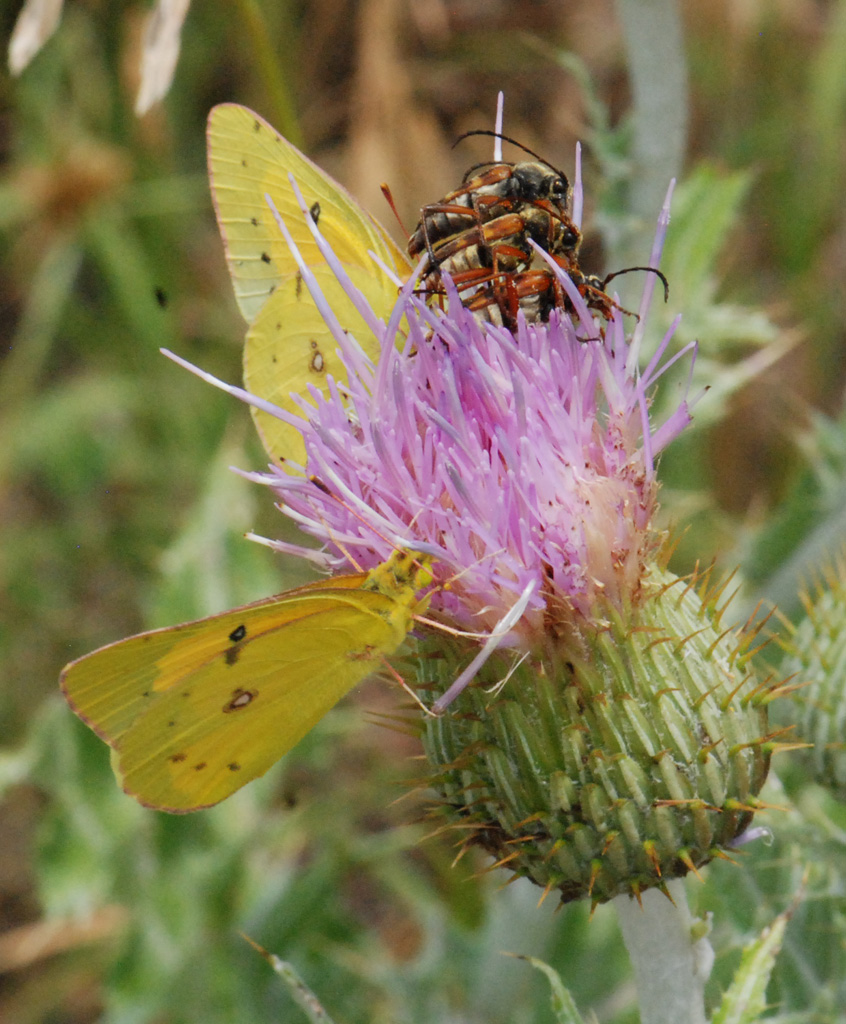Say "thistle" and the automatic response is to think "aggressive, obnoxious weed" and "How fast can I get rid of it?" Wavy leaf thistle (Cirsium undulatum), though, is the reasonable cousin in a family of assertive rapscallions. With its gray-green foliage, short height, and less heavily armed leaves and stems, it's definitely a kinder, gentler thistle. It's also not as likely to take over the landscape as many of its relatives are, a distinct advantage when thinking about including it in a garden or in a restoring prairie.
Luckily, the basal rosettes of wavy leaf thistle are not easy to confuse with other thistles. The gray green color and wavy leaf edges are a straightforward "tell", so the plant is easy to identify, even in very early spring.
I like the color and texture of the leaves of wavy leaf thistle, but my favorite part of the plant is the bloom.
Not only is it a beautiful, clear, light purple that looks for all the world like a purple powder puff in a rough, green handle, but these flowers are like magnets to insects. Even as I was focusing in on this blossom for a second shot, I noticed a hint of orange - a sulfur butterfly had landed on the backside, not more than a couple feet away from me, while I was taking the first photograph.
I managed to miss the early blooms of the thistles this summer, but obviously there were still a few around when I went tromping through the Back Five yesterday afternoon. The most popular single bloom was this one which, for some reason, had attracted 2 sulfur butterflies and a triple-decker array of flowerloving longhorn beetles. Its nectar must have been particularly sweet!
Sometimes it didn't seem to be the nectar that attracted insects to the blossoms. On this blossom, a bumblebee and two beetles almost seemed to be resting in the shade of the purple pom-pom.
Even when definitely past their prime, the fading wavy leaf thistle blooms seem to attract more than the normal number of insects. The sulfur butterflies still found them attractive, as did a moth on this bloom.
Here a bumblebee seemed to be nectaring, while a grasshopper nymph watched.
And a flowerloving longhorn beetle still thought this over-the-hill bloom was worth feeding on, as well.
I'm sure that, if I had looked a little longer or a little harder, I could have found many more insects enjoying these showy flowers.
So have I put any wavy leaf thistles into my flower beds? No, actually I haven't. In fact, I didn't even think of doing it until I started writing this paragraph! But now I'm thinking that I ought to give them a try. The bloom color would echo the lavender of wild bergamot (Monarda fistulosa) nicely, while the leaves would both give a different form in the garden mix and, at the same time, echo the color of the large, gray-green leaves of the giant coneflower (Rudbeckia maxima). When I do try them, I'll let you know how it works out. After all, I wouldn't try this with just any old thistle!








So that's what that is in my yard! I admit to mowing over it, and also to cutting it off when it blooms; yes, it might be nice to keep in the prairie, but too many people wear open-toed shoes or go barefoot in my yard to allow it to spread.
ReplyDeleteI have been wanting to add some native thistle to my garden not only as a nectar source but also host plant to the painted lady. Invasive thistle grows along the roadsides here and I never see pollinators on them. Your photos of all the pollinators are impressive.
ReplyDeleteI think goldfinches love to eat thistle seed.
ReplyDelete